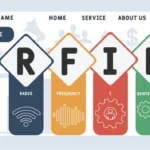The best solar CRM software in 2026 is Scoop, a powerful platform designed to streamline lead management, strengthen customer relationships, and accelerate project workflows for solar companies. But depending on your business size, sales process, and integration needs, other options may be a better fit.
In this guide, we’ve highlighted the top solar CRM solutions, along with their key features, advantages, and limitations.
Discover more insights in this related post—unlock ideas you may have missed today!
1. Scoop
Scoop is one of the best solar CRM software. It’s a project-execution and field-operations platform designed for solar, storage, and electrification providers. Although it offers CRM-type functions such as lead and opportunity tracking, its real value comes from supporting solar businesses throughout the entire project lifecycle, from the sales handoff to permitting, installation, inspections, and long-term service.
The platform consolidates customer and project data, improves communication between office and field teams, and helps standardize complex processes using customizable templates and checklists. Its mobile-first interface is built for technicians on site, allowing real-time updates, photo capture, and documentation, even when offline.
Advantages
- Built for solar operations: Specifically tailored to the multi-phase workflows of solar companies, supporting smoother management of permitting, installation, inspections, and O&M.
- Field-oriented design: Mobile tools and live syncing keep office staff and field crews aligned, reducing miscommunication and missing details.
- Unified project records: Organizes photos, permits, forms, and job information in a single shared workspace, improving visibility across teams.
- High workflow flexibility: Customizable templates and automated processes let solar companies structure the platform around their own operational needs.
- Supports scaling: Ideal for growing businesses handling large project volumes or multiple crews by standardizing repeatable tasks.
Disadvantages
- Steeper onboarding and setup: Its robust feature set may require significant configuration time and thorough team training.
- Potentially high cost: Pricing may be a hurdle for smaller teams or organizations with many users.
2. Sunbase
Sunbase is a cloud-based, all-in-one solar CRM built to unify sales, system design, proposals, financing, and project management under a single platform. Created specifically for solar installers and related trades, it helps teams move smoothly from lead intake to system modelling, quoting, scheduling, and installation oversight.
Advantages
- Solar-tailored workflows: Designed around the needs of solar sales, design, financing, and project management, reducing the need for workarounds common in generic CRMs.
- Truly all-in-one: Combines CRM, proposals, design tools, scheduling, financing, and project tracking into one platform, minimizing the need for separate software.
- Strong field and mobile functionality: Features canvassing tools, GPS routing, and mobile access that support the efficiency of sales reps and installation teams on site.
Cons
- Opaque pricing: Sunbase does not publish pricing, requiring businesses to request a custom quote.
- Adoption time required: Because the platform covers many functions, teams, especially those new to solar-specific tools, may need time to learn the system fully.
3. OpenSolar
OpenSolar is a cloud-based platform for solar design, sales, and project management that also includes a built-in CRM. Created for solar professionals worldwide, it combines proposal creation, 3D system modelling, shading analysis, lead capture, workflow oversight, and customer-focused financing options, all in one unified tool.
Advantages
- Highly cost-effective: OpenSolar’s essential features are free, helping solar companies lower overhead and grow without paying licence fees.
- End-to-end workflow support: The platform integrates lead capture, system design, proposals, e-signatures, and payment tools into a single cohesive process.
- Polished customer proposals: Customizable templates and built-in financial modelling help sales teams deliver professional, conversion-ready presentations.
Cons
- Limited advanced engineering capabilities: While strong for residential work, it may not provide the level of engineering detail needed for large-scale or complex commercial projects.
- Mixed imagery quality: Free Google Maps imagery may be outdated in some regions, and higher-resolution alternatives typically come with additional costs.
- Less powerful than specialized CRMs: Although functional, the CRM component may lack the deep automation and customization offered by enterprise-grade CRM systems.
4. Spotio
Spotio is a field-sales and territory-management platform built specifically for mobile, door-to-door and outside sales teams. For solar installers who rely on neighbourhood canvassing, site visits and in-person sales activity, Spotio offers tools to map territories, optimize routes, capture leads and track rep performance in real time.
Advantages
- Ease of use: Designed for quick adoption by field sales teams, with a clean interface and intuitive mobile functionality.
- Mapping and territory management: Includes detailed maps, colour-coded territories and route optimization that help solar reps cover large areas efficiently.
- Mobile-first capabilities: Enables reps to log visits, update lead status and record activities directly from the field.
- Lead tracking and visibility: Provides managers with real-time insights into rep activity, helping improve accountability and sales performance.
Cons
- Higher cost for small teams: Pricing can be expensive for start-ups or smaller solar teams with limited budgets.
- Limited pricing transparency: Requires contacting the company for a custom quote, which can make budget planning more difficult.
- Not built for full solar workflows: Lacks solar-specific features such as proposal creation, system design or installation tracking.
5. JobNimbus
JobNimbus is a CRM and project-management platform built for contractors and commonly adopted by solar installation companies to organize leads, manage projects, coordinate field teams, and streamline workflows from first inquiry through installation.
Advantages
- Lead and contact tracking: Enables solar teams to manage prospects efficiently through customizable pipeline stages.
- Project and field management: Offers job boards, scheduling tools, file uploads, and a mobile app to support field crews and keep projects on track.
- Centralized documentation: Stores site photos, permits, contracts, and installation files within each job record for easier organization.
Cons
- Not solar-native: Does not include certain industry-specific features such as automated incentive workflows, rebate tracking, or advanced solar analytics.
- Customization required: Tailoring workflows to solar processes may take time and effort to set up effectively.
- Limited reporting features: Analytics are less advanced compared to some dedicated solar CRM platforms.
6. Aurora Solar
Aurora Solar is a top cloud-based platform for solar design and sales, widely adopted across North America, including by many installers. It supports remote site assessment, detailed 3D roof modelling, shading analysis, performance simulations, and rapid proposal creation. The platform also incorporates CRM-like workflow tools and integrations that help sales, design, and operations teams collaborate from a unified system.
Advantages
- Remote site modelling: Create precise 3D roof representations using satellite or LiDAR data, all without an initial site visit.
- High-level shading analysis: Generate accurate irradiance and shading assessments to enhance system sizing accuracy and customer trust.
- Professional proposals: Build branded proposals in minutes, complete with financial analyses, incentive options, and production forecasts.
- Workflow automation: Improve sales-to-design transitions and eliminate repetitive tasks through built-in automations and system integrations.
Cons
- Steeper learning curve: Mastering its advanced design tools may take time, particularly for complex roof layouts.
- Higher-tier pricing: Features like LiDAR, advanced modelling, and API access can be costly for smaller or budget-conscious installers.
- Occasional design limitations: Some unique roof structures or specialized design scenarios may still require manual adjustments.
7. HubSpot CRM
HubSpot CRM is an all-in-one platform built to connect marketing, sales, and customer service in a single ecosystem. For solar companies, it offers a flexible framework capable of handling lead capture, nurturing, quoting, installation workflows, and post-installation support.
Advantages
- Easy to learn: The platform is intuitive and straightforward, allowing teams to get up and running quickly without specialized training.
- Generous free plan: The no-cost version supports unlimited users and up to one million contacts, making it ideal for small or expanding solar businesses.
- Built-in sales and marketing tools: Teams can manage email marketing, landing pages, customer tracking, and sales pipelines directly within HubSpot.
- Customizable workflows: Pipelines, deal stages, and custom fields can be tailored to reflect solar processes such as quoting, permitting, installation, and inspections.
- Extensive integrations: Works with numerous third-party applications, including several platforms focused on solar project management and installation tracking.
Cons
- Rising costs for advanced features: More sophisticated capabilities, such as automation, advanced reporting, and predictive tools, require higher-tier plans that can become costly as teams scale.
- Not specialized for solar: Processes like site surveys, CAD handoffs, and technical documentation typically need custom configurations or external integrations.
- Key features behind paywalls: Custom dashboards, deeper analytics, and fully automated workflows aren’t available on lower-tier plans.
- Complexity increases with growth: As more custom fields and workflows are added, teams may need additional training to manage the system effectively.
- Possible onboarding fees: Some paid packages include onboarding costs or annual commitments that increase overall investment.
Best Practices For CRM Implementation
Planning Your Workflow Structure
A well-designed workflow serves as the foundation for successful CRM implementation in your solar business. We recommend starting by mapping out each phase of your lead and project management process within the CRM system.
Centralizing communication brings significant efficiency gains. Instead of searching through emails and spreadsheets, all project discussions stay connected to relevant customer records. This approach helps improve collaboration and reduces information silos.
Key elements to focus on when designing your workflow:
- Set clear stages for each part of your sales process
- Create logical handoff points between teams
- Establish essential checkpoints for quality control
- Build in operations reviews to identify bottlenecks
- Design project milestone tracking that keeps everyone accountable
The best workflow structures grow with your business, so leave room for future refinement as your team identifies ways to improve your systems.
Setting Up Automations And Email Sequences
Smart automation transforms how your solar business handles follow-ups and customer communication. Here’s a practical list of critical automations to implement:
- Automatic email responses for new lead capture
- Scheduled follow-ups based on prospect interactions
- Quotation generation and delivery
- Project milestone notifications
- Customer satisfaction surveys at key completion points
Automation dramatically cuts down onboarding time. What once took hours of manual work now happens in minutes. Your sales team can focus on meaningful conversations rather than administrative tasks.
The real power comes when you integrate your CRM with other business tools. Connect your calendar, accounting software, and proposal tools to create a seamless pipeline. These integration features allow information to flow automatically between systems, reducing duplicate data entry and improving accuracy.
Most modern CRMs offer pre-built connectors for popular business applications, making the setup process relatively simple. Your team will appreciate how automation eliminates repetitive tasks and helps them stay focused on closing deals.
Training Your Team For Smooth Onboarding
A successful CRM rollout depends heavily on how well your team adopts the new system. We find that companies with strong customer service values typically see faster acceptance of CRM tools.
Effective training approaches include:
- Hands-on workshops with real business scenarios
- Department-specific sessions addressing unique needs
- Regular check-ins during the first month of implementation
- Simple reference guides for common tasks
- Designated CRM champions within each team
Communication about the benefits helps secure buy-in. Show your team how the CRM will make their work easier, not more complicated. Highlight relationship management improvements and how the system supports business growth.
Ongoing support remains crucial long after initial training. Schedule regular refresher sessions, especially when new features become available. Your company will see better results when everyone uses the system consistently.
Starting with basic functions before adding complexity works best for most teams. This approach prevents overwhelming staff while still delivering early wins that encourage continued use.
Maintaining Data Cleanliness And Accuracy
Clean data forms the backbone of an effective CRM system. Your team needs accurate information to make sound decisions about leads and projects.
Establishing consistent data entry protocols helps reduce errors significantly. We suggest creating clear guidelines for how contact details, project specifications, and interaction notes should be recorded. This consistency ensures everyone can find and use information efficiently.
Regular verification of client information proves essential for long-term reliability.
Teams with access to multiple data sources need special attention. Establish which system serves as the “source of truth” for different information types. This approach prevents confusion when data appears in several places across your technology stack.
The time invested in maintaining clean data pays off through improved efficiency and better decision-making. Your team will spend less time searching for information and more time using it effectively to serve clients.
Frequently Asked Questions About CRM For Solar Companies
Can a solar CRM support residential and commercial projects?
Yes. Most modern solar CRMs support both residential and commercial workflows. Residential projects typically benefit from quick quoting, proposal tools, and streamlined permitting steps, while commercial projects require more detailed documentation, multi-stakeholder collaboration, and advanced design capabilities.
Does a solar CRM help with field operations?
Absolutely. Many solar CRMs, especially those built for installers, include features that support field teams. These may include mobile apps, site-survey templates, photo capture, job checklists, installation workflows, and real-time syncing between office and field staff.
How important are integrations when choosing a CRM?
Integrations are very important for solar companies because they allow critical systems, such as accounting, design tools, proposal software, financing platforms, and scheduling apps—to share data automatically. A CRM with strong integration capabilities prevents double data entry, reduces errors, and supports smoother workflows across departments.
Is workflow automation necessary in a solar CRM?
Workflow automation isn’t strictly required, but it delivers major efficiency gains and is considered essential for solar businesses looking to scale. Automation can handle repetitive tasks such as follow-ups, appointment reminders, document requests, milestone notifications, and pipeline updates. This improves consistency, speeds up sales cycles, and ensures that no lead or task falls through the cracks.
Don’t miss this featured post packed with standout insights worth your attention.






